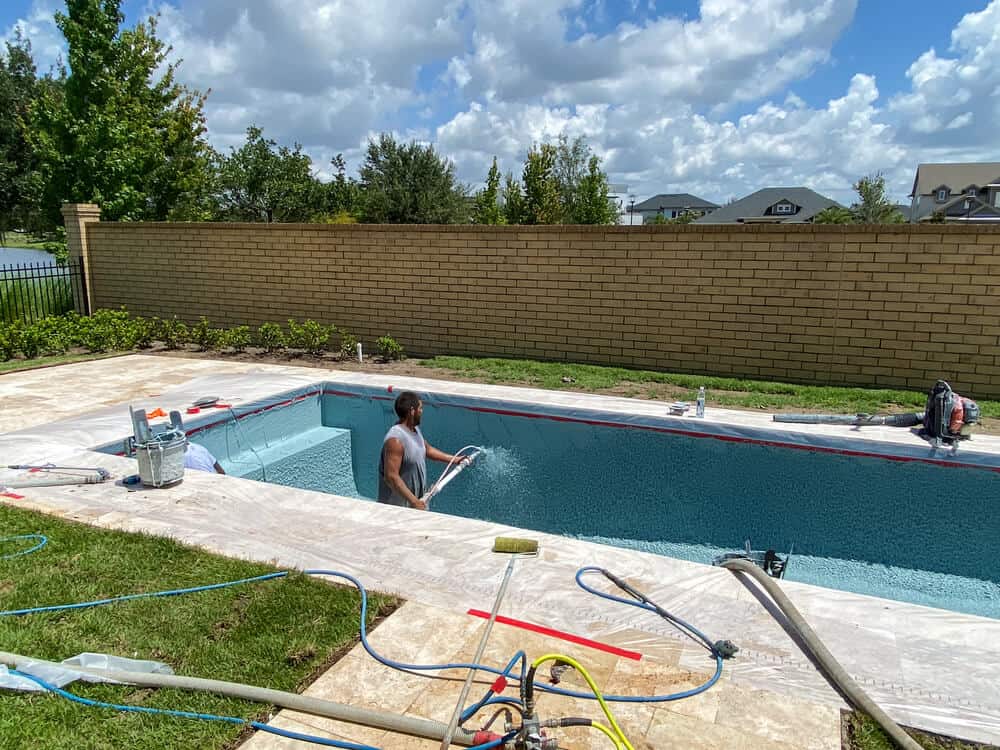Pool plastering is one of the most basic maintenance needs for Los Angeles, CA homeowners lucky enough to have a pool on their property. Besides providing this service for our residential property clients, All-County Pools & Spa also serves commercial property owners seeking pool replastering. But as a pool owner or property manager, how do you know when it is time for new pool plaster?
Should I Repair My In-ground Pool Or Replace It?
There are many responsibilities to pool ownership and maintenance. But one of the least considered is that of resurfacing as needed. For most Los Angeles area swimming pools, pool replastering, also called replacement, is necessary every 10 years.
Unfortunately, time flies when you are having fun in sparkling water under a Southern California sun. Too many owners forget about these routine maintenance and pool repair needs until they recognize bigger or multiple surface flaws. Then, their question is most typically, “Should I repair or replace my pool?”
Obviously, the answer to the “repair or replace” question is a highly individual one that can be best answered by an All County Pools & Spa professional. But when the pool has multiple flaws, replacement of the pool plaster is usually a better response. Pool replastering gives you a clean slate and pristine surface that can be enjoyed for at least another decade with good routine maintenance, just like a new pool.
Signs It Is Time For Pool Plastering
If you notice multiple signs of problems with your pool surface from the list below, you probably need pool plastering. These signs include:
- Staining
- Some staining of your pool surface is inevitable because of the porous nature of the natural material. But poor water chemistry can cause major staining that makes this property feature an eyesore. You first need to fix the staining problem, then have your pool plastering replacement performed to avoid ruining the appeal of the new surface. There are special protectants for pool plaster that your contractor can use to prevent staining of your white or colored pool plaster.
- Roughness
- Pool plastering can resolve irritating and algae-attracting roughness on your pool surface. If you are tired of snagged swimsuits, scratched skin and having to sand these areas, resurfacing will permanently resolve the problem.
- Thinning, Chipping and Leaks
- Plaster can thin or flake off over time. This causes dark spots on the surface where underlying concrete shows through. When the pool plastering thins to this degree it also can lead to leaks, chips and cracks through the concrete.
- Changing Plaster Color
- If your pool is any color other than white, this coloration can fade due to water chemistry problems or breakdown of the color material. Fresh colored pool plaster can provide a more appealing feature on your property.
Steps Involved In Pool Plastering
Pool plastering typically takes only a few days for a standard residential pool. But it can take several weeks for large commercial, institutional or competitive pools. There are multiple steps involved in this process, including:
- Draining of the pool
- Removal of old plaster
- Pouring of the new plaster
- Curing and hardening of the pool plastering
- Smoothing of rough areas on the surface
- Applying finishing touches
- Refilling the pool
If you have an in-ground swimming pool and are questioning whether you need plaster repair or replacement, ask the pros at All County Pools & Spa in Los Angeles. We provide the highest quality pool and spa services, including replastering pools and pool remodeling. Schedule your consultation and free estimate today by calling All-County Pools & Spa at (818) 720-3316.


